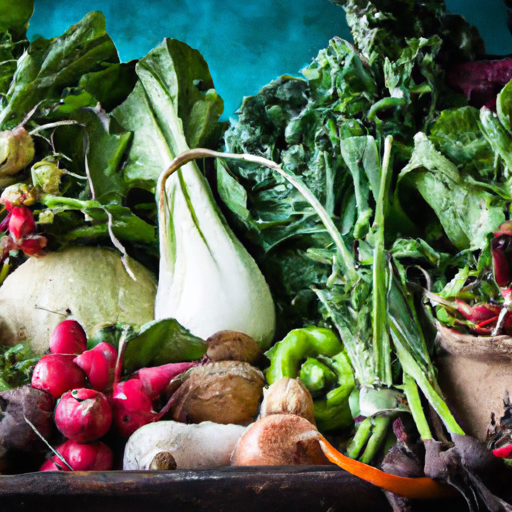Exploring the Vibrant Flavors of the Asian Medley
If you’re someone who loves the dynamic and eclectic flavors of Asian cuisine, then you’re in for a treat! In today’s blog post, we will be delving into the delightful world of the Asian medley. This unique blend of fresh vegetables brings together a harmonious combination of taste, texture, and versatility. From stir-fries to soups, the Asian medley has become a staple ingredient in many dishes across the globe.
A Symphony of Tastes
One of the most remarkable aspects of the Asian medley is its ability to offer a symphony of tastes in a single bite. With a blend of crisp and crunchy vegetables, this medley typically consists of a mix of bean sprouts, snow peas, bok choy, bamboo shoots, and water chestnuts. Each ingredient contributes its own distinct flavor profile to the ensemble, resulting in a delightful melody of tastes on your palate.
Versatility in the Kitchen
The Asian medley is like a chameleon in the kitchen, adapting flawlessly to various cooking methods and recipes. Its crunchy texture and vibrant colors make it an excellent choice for stir-fries, adding a refreshing and crisp element to the dish. It can also be blanched and added to soups or even incorporated into salads for a nutritious and flavorful twist. The medley’s versatility allows it to shine in both vegetarian and non-vegetarian dishes, making it a popular choice for home cooks and professionals alike.
Nutritional Value
Not only is the Asian medley a delightful treat for your taste buds, but it also packs a punch when it comes to nutritional value. This medley is low in calories and fat, making it a fantastic addition to any healthy diet. It is rich in essential vitamins and minerals, including vitamin C, vitamin K, and potassium. Additionally, the medley’s diverse mix of vegetables ensures a wide array of health benefits, from boosting immunity to promoting digestive health.
Exploring History and Facts
The Asian medley is deeply rooted in Asian culture and culinary history. It draws inspiration from traditional Asian cuisine, where balanced flavors and fresh ingredients are highly valued. While the specific combination of vegetables may vary, the concept of a medley has been a part of Asian culinary traditions for centuries. The popularity of the Asian medley has spread far and wide, transcending borders and becoming a versatile ingredient in various global cuisines.
Time to Get Cooking!
Now that you’re familiar with the Asian medley’s unique flavors, versatility, and nutritional benefits, it’s time to hit the kitchen and explore the endless possibilities. Whether you’re a novice cook or a seasoned chef, the Asian medley is sure to add a burst of freshness and excitement to your dishes. So, go ahead, experiment, and let your creativity shine as you embark on a culinary adventure with the delightful Asian medley!
Remember, the key to enjoying the Asian medley is to embrace its crispness, savor its flavors, and let it elevate your favorite recipes to new heights. Happy cooking!
Note: The exact composition of the Asian medley may vary depending on regional preferences and seasonal availability.
Asian Medley
Origin: The concept of Asian medley does not refer to a specific ingredient or dish, but rather a combination of various Asian vegetables that are commonly used in Asian cuisine. The origin of these vegetables can vary depending on the specific ingredients included in the medley.
Common Uses: Asian medley is typically used in stir-fries, soups, salads, and as a side dish in many Asian dishes. It adds a variety of colors, textures, and flavors to the overall dish.
Nutritional Benefits: Asian medley is often rich in vitamins, minerals, and dietary fiber. It commonly contains vegetables like bok choy, snow peas, mushrooms, bell peppers, carrots, and bean sprouts, which are all nutrient-dense and contribute to a healthy diet.
Unique Properties: The combination of different Asian vegetables in an Asian medley creates a harmonious balance of flavors and textures. The medley often showcases the culinary principle of yin and yang, with a mix of vibrant colors, contrasting flavors, and varying textures.
Historical Significance: While there may not be a specific historical significance associated with the concept of Asian medley, the use of a variety of vegetables in Asian cuisine has a long history. Asian cuisines, such as Chinese, Thai, Japanese, and Korean, have always emphasized the importance of balancing flavors and incorporating a diverse range of ingredients to create well-rounded meals. The combination of different vegetables in Asian medley reflects this culinary tradition.




Use the share button below if you liked it.
It makes me smile, when I see it.